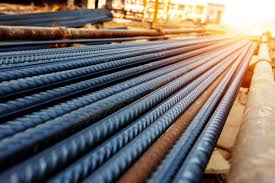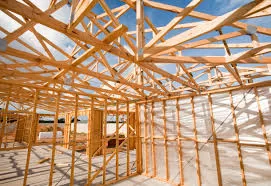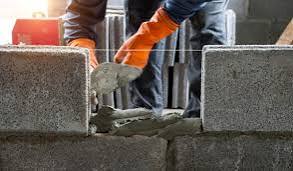A construction building material is any material that is used in erecting a structure to be used as a residential or commercial building. The construction industry uses different types of materials when building structures and these include:The use of these different materials will depend on this structural capacity of the material. In various areas, there are rules and regulations as to the materials used in constructing a structure. While architects are selecting the construction materials, they consider factors such as appearance and a material cost. Choosing the right material for your desired project makes a project to be improved and extended for a longer time. The following are the most popular construction materials: The following are some of the common construction materials discussed below:
1. Concrete

Concrete is widely used in construction and is one of the most frequently used construction materials. This must be true since the Royal Society of Chemistry claims that it is the most used material in the whole world. Concrete is a combination of fine and coarse aggregate and is used with a binder like cement and water. They are then allowed to be cured and set for some time after which the final mixture is produced. Concrete requires seven days for a cure and on an average 28 days for its strength to peak. In construction, reinforced concrete is prevalent, and the steel is included within the concrete to enhance the tensile strength. Concrete can be classified into different categories, and some of the most common ones include lightweight concrete and waterproof concrete.
The concrete type depends on project type. One of the major benefits of concrete is that it can be molded into any desired form and subsequently it sets to form a stone-like substance. The construction of tall buildings boomed as we tapped steel as a supporting reinforcement material.
2. Steel

Steel is therefore a composite material, being made of alloys of iron and carbon. It is strong, functional, and known to have good tensile strength. It is also lightweight for handling, more flexible when in the construction process, and is relatively cheap when it comes to shipment than other constructional material. Steel has low ductility and if one does not put a lot of pressure on it then it still holds its mechanical properties right from the time it is bent.
The significance of steel is that it has certain characteristics such as high strength to weight ratio. In comparison to concrete, it is less time-consuming interlink, and can be installed in any climatic conditions. This means that the steel product is desired to be implemented with a high corrosion resistant, but if not well installed then it is prone to corrosion. This makes it a disadvantage for construction using steel since the resistance to high temperatures leads to breakdown of steel material. The extent of fire resistance depends on the type of steel known to human-being.
For structural sections: We use steel for the tensile strength of structures by incorporating it in form of reinforcing bars. Roofing: In drafting our roofing products including purlins, internal walls, ceilings and cladding, we employ steel . Internal fixtures: We use it to fashion interior fixtures like rails and stairs. Utilities: The underground water, fuel, power and gas requires infrastructure is made of steel. Some of the construction materials that are dated back and are still in use to the present day include the wood. It is non-toxic, environmental friendly; with excellent mechanical properties of tensile strength, and impact and fatigue resistances; and is versatile in all aspects. It can be deformed through bending or molding or cured into expounds shapes. Besides its durability other distinct quality it has is sustainability since it originates from trees which are renewable resources.
3.Wood

The wood can be used in commercial and residential construction; furthermore, it can be used together with other materials. It has symbiotic compatibility with steel, marble, and aluminum. Permitting, wood is lighter compared to other construction materials, and there is a tendency of manufacturing woods of similar sizes and dimensions. It is strong in tension, and has good uses in acoustic insulation applications. Erection of walls, floor slabs, roofs and roofing/EditOrnamentation of compound walls, doors and window sashesThe underpinning steel or aluminum frames of structure such as buildings and bridges
4.Masonry

Masonry involves bricks which are rectangular blocks and are then joined with a specific material known as mortar. Be it understood that the concept of brick making originated from heated and dry clay. They are highly compression resistant but they are brittle in nature and can break at will. Probably the most crucial bricks available today are the concrete blocks which contain steel reinforcement. Masonry is non-combustible and has great strength which is an excellent feature of this construction material. Because of its density and strength in tension and compression, we apply it in construction to the load bearing walls. Masonry can easily accommodate multi story buildings and when reinforced with concrete, it can be a relatively inexpensive building option. Other forms, including veneer masonry, are employed for ornamental applications. Masonry is also used in the construction of gabion in areas that experience frequent floods.
Read also Essential Tools For Home Renovation: A Guide To Successful DIY Projects
Read also Mastering Carpentry: 5 Must-Have Makita Tools for Your DIY Projects

